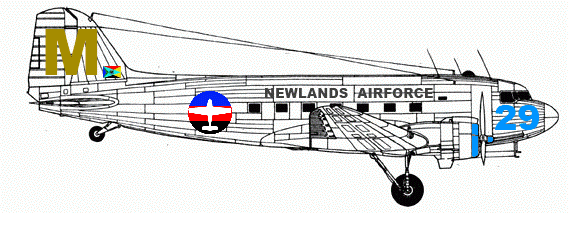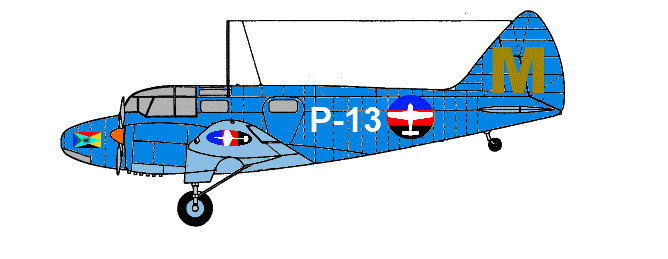1946 till 2005
The early aircraft of Newlands Airforce
1) Spitfire Mk-IX, XII, XVII
Arriving in 1946, Spitfires were the first terrestrial and naval fighters of the Newlands Airforce and Newlands Navy. Altogether twenty-six Mk IX, XII, and XVII arrived, including the dozen Seafires intended for the first aircraft carrier of the Newlands Navy. By the beginning of the Libyan wars, only those Seafires remained in service and all were lost in the conflict (six each in the First and Second Libyan War).
2) Douglas C47 Dakota
Douglas C47 was the beloved Newlandean aerial workhorse, equipping many civilian airlines as well as various branches of the military. It was the first transport aircraft of NLAF. The first C-47s arrived in 1946 a few weeks before the Spitfires got delivered, but went to equip NGAT, leaving the honors of first military airport on Newlands to the venerable British fighters. Altogether thirty-nine serviced with various branches of MANATO, thirty-six still being employed at the beginning of Libyan wars. Twenty-nine were lost during the conflict. The dozen remaining remained in service a bit longer after the war ended, finally finding their way into various domestic and international air museums.
3) Airspeed Oxford
Oxford was the first trainer of NLAF, being placed in service in 1947. Altogether fourteen were procured, but none survived until the beginning of Libyan wars.
4) De Havilland Mosquito
Mosquito, the first reconnaissance aircraft and bomber of NLAF, arrived in 1948 and immediately caught the imagination of both the population and its NLAF pilots. However, that meant that Mosquitos saw disproportionate use, reducing them from eleven to only two remaining in service by the beginning of conflict. Both of these were lost early in the war, flying bombing missions against the superior Arab jets.
5) Beech 18
In 1955 MANATO accepted a bunch of wartime Beech 18s from the United States. Altogether thirty-seven Beech two-engine light transport planes served in NLAF. Though all of them survived to fight in 1963, used by the Airforce in all possible roles, they suffered heavy losses from enemy jets. Eleven survived the conflict and were finally pensioned off in 1999.
6) Antonov An-2
With sixty-eight acquired in total, An-2s were the most numerous transports in the period 1955-1975. Sixty entered the conflict in 1963. Thirty-six were still in service after the final victory was won. The last NLAF An-2s were retired from service in 2005.
7) De Havilland DHC-3 Otter
Not long after their Canadian debut, De Havilland DHC-3 Otters (on wheels or floats) started equipping NLAF squadrons. Used in many capacities, eleven of the original dozen flew against the enemy, until all planes were lost.





